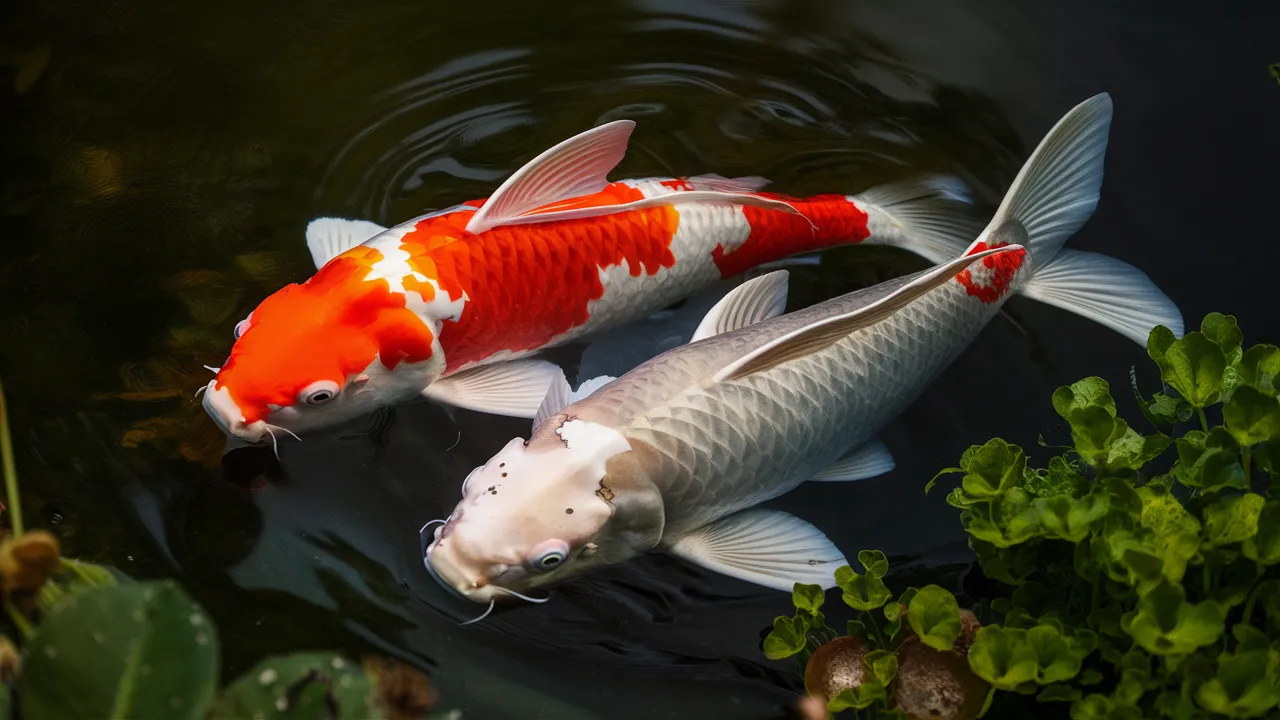Koi fish, with their vibrant colors and graceful movements, are a beloved addition to ponds and aquariums worldwide. While many enthusiasts admire their beauty and behavior, a common question arises: Do Koi fish sleep? Understanding the sleeping habits of koi is essential for any fish keeper. Koi Fish Information will explore koi sleep patterns, their behavior, and how to create a conducive environment for these stunning creatures.
Understanding Koi Fish Behavior

Before diving into the sleeping habits of koi, it’s important to understand their general behavior. Koi fish are known for being social, active, and curious creatures. They often swim around their ponds or interact with each other and their environment.
Koi are diurnal, meaning they are primarily active during the day. Their activity levels can vary based on several factors, including:
- Water Temperature: Koi are more active in warmer water, typically between 65°F and 75°F.
- Feeding Times: Koi are often more active during feeding times, eagerly swimming to the surface to take advantage of food offerings.
- Environmental Stimuli: Changes in their environment, such as the presence of predators or the introduction of new fish, can affect their activity levels.
Do Koi Fish Sleep?
Koi Sleep Patterns
To answer the question, do koi sleep? it’s important to recognize that koi do sleep, but their resting patterns may differ from what we typically associate with sleep in other animals.
- Resting States: Koi enter a state of rest where they become less active and may stay in one place for extended periods. During these times, their body movements slow down, and they may hover near the bottom of the pond or in shaded areas.
- Nocturnal Awareness: While koi do rest, they remain aware of their surroundings. Their ability to sense movement and changes in light allows them to respond quickly to potential threats, even during rest.
Signs of Koi Resting
Understanding the signs that koi are resting can help you monitor their health and well-being:
- Reduced Activity: If your koi are swimming less and spending more time in one spot, they may be in a resting state.
- Positioning: Koi often rest near the bottom of the pond or under plants, providing them with a sense of security.
- Breathing Rate: During rest, koi may exhibit a slower breathing rate, reflecting their reduced activity level.
Why Do Koi Sleep?
Energy Conservation
Like all animals, koi need to conserve energy. Resting periods allow them to recharge their energy reserves, enabling them to remain active during feeding times and when interacting with their environment.
Growth and Development
Rest is vital for the growth and development of koi, especially juvenile fish. Adequate rest supports metabolic processes, allowing koi to grow and thrive.
Stress Relief
Koi can experience stress due to environmental changes, water quality issues, or the presence of aggressive tank mates. Resting provides them with a necessary break, helping to reduce stress levels and promote overall health.
Creating a Suitable Environment for Koi Rest
Pond Design
Creating a comfortable and secure environment is essential for koi to rest properly. Here are some design elements to consider:
- Depth: Ensure your pond is deep enough (at least 3 feet) to provide koi with a safe resting area.
- Shelter: Incorporate plants, rocks, and other structures that offer hiding spots for koi to retreat to when they need rest.
Water Quality
Maintaining optimal water quality is crucial for koi health and their ability to rest:
- Temperature: Keep water temperatures within the ideal range of 65°F to 75°F. Extreme temperatures can affect their activity levels and resting patterns.
- pH Levels: Aim for a pH level between 7.0 and 8.0 to create a stable environment for koi.
- Oxygen Levels: Ensure adequate oxygen levels in the water, as koi require well-oxygenated water for optimal health.
Feeding Practices
Feeding koi at regular intervals can help establish a routine that supports their resting patterns:
- Feeding Schedule: Feed your koi during the day to encourage activity and provide them with energy before their resting periods.
- Quality Diet: Offer a balanced diet rich in nutrients to support their growth and overall health. High-quality pellets and occasional treats can keep them healthy.
Common Myths About Koi and Sleep
Myth 1: Koi Do Not Sleep
One of the most common misconceptions is that koi do not sleep. While koi may not exhibit sleep in the same way as mammals, they do enter resting states that are crucial for their health.
Myth 2: Koi Sleep at Night
Koi are primarily diurnal and tend to rest during the night. However, they may still be active and come to the surface if disturbed or if food is introduced.
Myth 3: Koi Sleep in One Position
While koi may rest in one spot, they often change positions or locations as they feel the need to adjust for comfort and security.
Monitoring Koi Health During Rest
Regular Observation
Regularly observe your koi to identify any changes in behavior during their resting periods. Look for signs of stress, illness, or abnormal resting patterns.
Health Checks
Conduct routine health checks to monitor for any physical issues, such as lesions, fins damage, or discoloration. Early detection of health problems can lead to more effective treatment.
Water Testing
Regularly test water parameters to ensure they remain within optimal ranges. Poor water quality can affect koi health and their ability to rest.
Conclusion
Koi fish do indeed sleep, although their resting patterns may differ from those of other animals. Understanding koi behavior, including their need for rest, is essential for any koi keeper. By creating a suitable environment and monitoring their health, you can ensure that your koi thrive and remain healthy.

Related Posts
Koi Fish Ulcers: Understanding, Preventing, and Treating This Common Ailment
Do Koi Fish Hibernate? The Truth About Koi and Winter
Koi Bacterial Infection: Understanding, Prevention, and Treatment